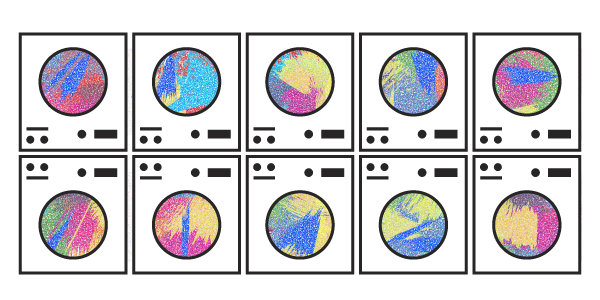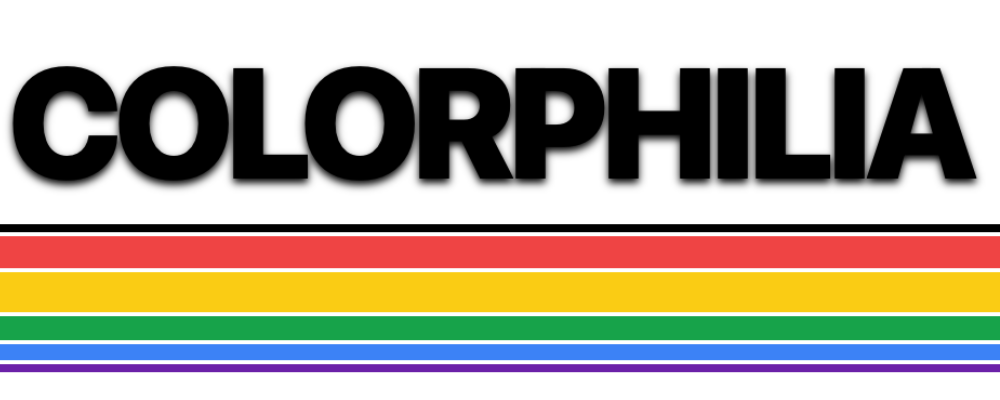A Guide for the Perplexed (about Laundry)
Contains no practical advice or useful information.

This week's newsletter deals with an existential question: What exactly is laundry?
How do you come up with these things?
Much like Vincent van Gogh reconsidering the sunflower once he started writing in French, I had my own "Come to Vincent" moment in Madrid, as I was thinking about laundry. For context, I am currently riding on the TGV train from Barcelona to Paris, where I am very likely to do laundry.
Ok. Give me a teaser. Where does the word laundry come from?
The Spanish word for laundromat is lavandería, making it somewhat of a cognate with lavender (the flower).
While this may seem like a specious connection, please consider that one of the most popular cleaning products in South America is a light purple with a somewhat lavender scent.
Are you are talking about Fabuloso?
See, everyone knows.
As the Latin u and v were somewhat interchangeable in writing until the late 17th century, the case could be made that the word laundry itself is simply a borrowing from lavandería.
That doesn't seem so existential.
Let me put it this way: What is the expectation of laundry? What is the process of laundry? What was the point of laundry?
Ummm... to clean your clothing?
If the point of laundry was cleaning clothing, Spanish would have used the word limpia which means clean. They were quite obsessed with clean things, like blood (with the limpieza de sangre, or literally the cleanlinesss of blood laws) for centuries.
It seems like the word is describing the process used to clean the clothing. At the very least, that is what most people think.
Washed
Lavandería, most people will tell you, is derived from the Latin lavō, meaning "to wash". So just like a lavatory is just a fancy name for wash room, a lavandería is a place to do laundry.
There is just one tiny assumption that one has to make for this to work, and that is to assume that laundry is about washing clothing in water. In the pre-modern world, it was not necessarily true.
This would likely be referring to using water to remove dirt.
The problem is that washing is only part of the process.
Fluffed
Similar to the "wash and fold" services available in most metropolitan areas today, in Latin, the word for laundry was fullo, with the place laundry was done being called a fullona / fullónica and the laundry person being called a fullónicus. Fullo is translated as "fuller" in English, and the point of it was something about fulling out the fabric.
This seems to be about maintaining the shape of the fabric.
Pressed
In Hebrew, the root was K-B-S, which is probably more connected to the stomping or pressing of the fabric. In fact, in the Bible, during the laws of various impurities, it uses this root to refer to the cleaning of clothing, and the R-H-TZ root to refer to washing of the person's body with water. Ancient laundry may have had more to do with dry cleaning than with our understanding of washing with water.
It should be noted that this sort of pressing would kill the bacteria in clothing, which is why it was mentioned.
So each process has its own goal, and different types of clothing require different types of care. It sounds like articles of clothing are like people and one size fits none.
See, this feels like we are talking about more than just laundry here.
Isn't this a color newsletter? Where is the color??
I'm glad you asked. Laundry has a lot to do with color. It's all about color goals.
Whiter Whites
In French, there is a a process called blanchir, with the end result being blanchissage, the place where it was done called a blancherie, and the person doing work would be called blanchisseuse. This was how they would historically translate the word fullo in French. This would imply that the purpose of laundry of whitening or bleaching (from blanc) the dirtied fabric.
This understanding of laundry is also (indirectly and incorrectly) proposed by a 17th century etymologist, giving the source of laundry based on the lawn fabric, which was a white linen. I would assume that the goal of laundering a white linen was to restore the brightness.
I am tempted extend this idea of bleaching with Hebrew word lavan meaning white, similar to the word for milk in Arabic, laban. And I'm probably not the only one. A dominant variant spelling appears in several 16th and 17th century dictionaries, namely, Labandería. It works on two different levels: the first being the meaning of white (like milk), and the second being a reference to fabric, "la banda". (The ironic part is that if they would have borrowed this from its Latin cognate albus. it would have seemed like an Arabic word with the al- prefix.)
Longer Lasting Color
In several early modern dictionaries, we see a different direction in various Italian dialects. Instead of focusing on highlighting the whiteness, they choose to focus on color instead. Similar to the word for red wine in Spain, tinto, literally "dark", the Italians called process of laundry the cosa de tintore and the place as botega di tintore.
This perspective gives us an additional possibility for the origin of the word lavandería, following the Moorish influence on the Spanish language. As I've mentioned before, lawn is the word for "color" in Arabic. Lawndaria, or laundry, would therefore, be the place of colors. It would make more sense why there is a V / U and not a B. I would contend that it is a place that focuses on maintaining colors or care for without needing to re-dye them.
You don't by any chance have any additional arcane proof to back this up, do you?
I may have some additional support from Maimonides.
The 12th century Andalusian rabbi, philosopher, and physician?
One and the same.
Who wrote the original Guide for the Perplexed who you are mocking with this?
First of all, I wouldn't say that I was mocking anyone with this. Also, in my opinion, the style is more consistent with his fellow Andalusian Bahya ibn Paquda's Guide to the Duties of the Heart, but it's been a while since I've read it, so I may be misremembering.
Fine. What did he write?
I have a feeling that when he wrote about the biblical prohibition of doing work on the Sabbath, specifically regarding laundry, I think that while he used the Hebrew word for "whitening", his intention was the Spanish/Arabic understanding of maintaining color. Because it wouldn't make sense for someone to bleach red silk. But it's admittedly a stretch, and requires some more research.
This sounds like a leap. But that seems to be par for the course for you.
Also, all the detergent brands try to advertise the fresh smell. And you mentioned lavender. Why don't you write about the scent of laundry?
Didn't you mention earlier that this was a newsletter about color?
Fair enough. Do you have any other random insights related to color and laundry?
You may have heard of laundry blue, which is a blue substance which makes whites appear whiter, by counteracting the yellow tint. But that may also be a derivative of a word that people would have used long before discovering the substance when discussing laundry. Abluere is simply another word in Latin for laver (washing with water).
You mean like ablution as a ritual purification?
Sure. That works.
And finally, I'm sure you've mispronounced or misheard words in half a dozen languages during your travels this summer. Have you come across any of those during your research of laundry?
Well, yes actually. In the 16th and 17th centuries, English was unique of having a fabric called "lawn", which is most likely due to them being unable to understand the French pronunciation of the word lin, which means "linen". It is humorous to read theories about how it is a special fabric that comes from the city of Laon.
That's actually quite relatable. No one can understand the French. I'm convinced that they add in all those random letters just to mess with us. Where are you going after you do laundry in Paris? What language are you looking to mispronounce next?
I heard that Italy has a lot of good gluten-free options.
Bon Voyage! or should I say Buon Viaggio!
Grazie Mille!
